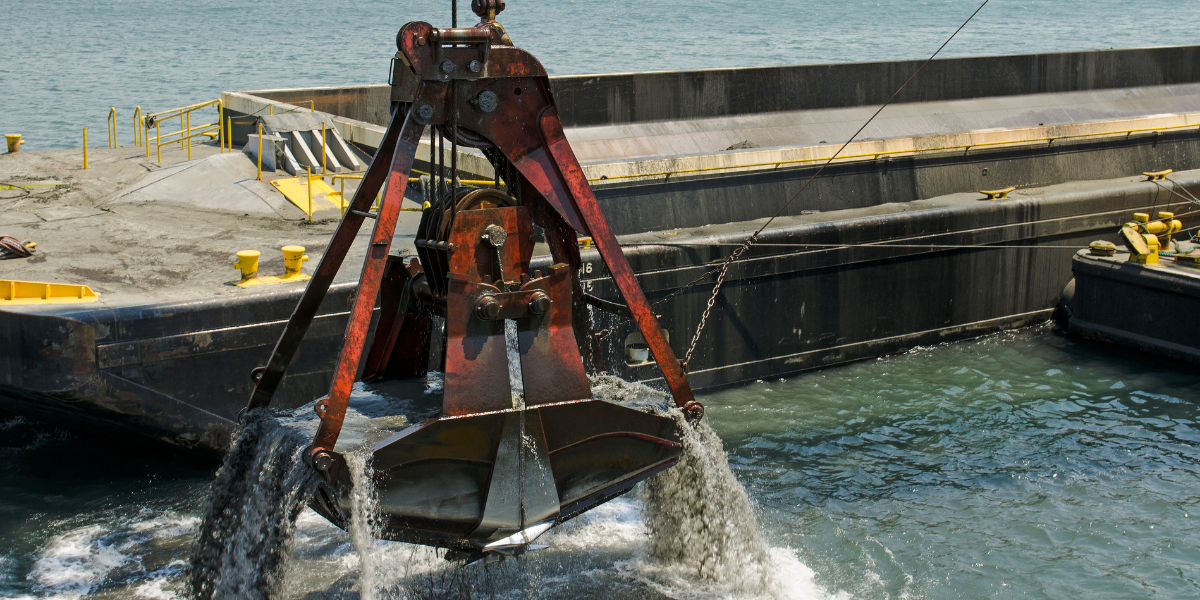Cutter Suction Dredger (CSD):
As the equipment used for dredging fails to pick up a lot of sediment, there is an increase in runoff. Identifying the different types of dredging instruments and implementing them in the appropriate areas of waterway management and infrastructure provides a solid basis for the management of these assets. In the line below, the handbook deals with the kinds of dredgers used often and gives the proper limits. It brings the compliance with the law and the consideration of environmental issues as well.
- Functionality: Cutter suction dredgers, which have a cutter head rotating on the bottom of water bodies for the purpose of fishing the material from the bed, cut and loosen the dredging material. Instantly, the loosen soil is picked up by a suction rig being pulled upwards through a suction pipe and probably gets to a pipeline or into a barge.
- Applications: The cutter head suction dredgers are specifically designed for erosive and cohesive soils like sand, clay, and large rocks in rivers, lakes, or ports. For instance, they could be applied on offshore platform constructions, channel responses, land reclamation, and shore augmentation designs.
Trailing Suction Hopper Dredger (TSHD):
- Functionality: A trailing suction hopper dredger relies on suction pipes with drag heads attached and when these are immersed in water, the sediment is been sucked into the hopper onboard the vessel. The hopper is then filled and the carriage of waste is performed by it. In a designated place of deposition, the material is discharged from there.
- Applications: Generally, this type of dredging machines are used for the dredging of the loose and medium density soils such as sand, silt, and gravel whose depth of water is such that it covers shallow and deep waters. As an instance, they prove to be very effective for securement of channels for navigation, harbor deepening and sea-aggregate mining.
Bucket Dredger:
- Functionality: A bucket dredger would do that with a series of buckets or clam shells attached to a rotating chain or ladder so that material will be excavated from the sea floor. Barge is built on the water surface where the vessel is designed to take load and attach it for transport.
- Applications: Bucket dredgers are particularly good for dredging in soft soils, clay and boulders, with depths of up to 100 feet. They are typically used for inside the harbor construction, well inside the trenching or and dredging of maintenance is most the time.
Backhoe Dredger:
- Functionality: Amongst dredging vessels backhoe, type often consists of an excavator mounted on a pontoon or a barge. The excavator removes the sediment with a bucket attach through the procedure of digging.
- Applications: Backhoe dredgers are suitable for dredging in confined places, near shores, and in areas having something in theirmidway that obstruct (interfere with) the position towards dredging. They overlap the process of dredging under structures, coastal defense works and they are usually used to reclaim land for different purposes.
Auger Dredger:
- Functionality: The operation of the systems with rotary augers heads (to extract and eliminate sediments and dregs) is performed with auger dredgers. The next this occurs is that the material is then forwarded through the auger system and dumped into the barge, transported through the pipelines, and so on.
- Applications: Auger dredgers are not only for dredging clayey soils and compacted soil, but clean sediments as well. They are employed in environmental cleanup, and lake/river restoration operations as also dredging projects for industries.
Jet Suction Dredger:
- Functionality: Jet dredging technique uses high-pressure water jets to convert the sediment into the liquid form which is then pumped up by suction increasing the pressure through the pipeline causing transfer of sediment to a particular area for its disposal.
- Applications: Jet suction dredgers are suitable for digging fine-grained materials, e.g. muddy, sandy, and silty, in areas of dredging, mechanical dredging are not as effective. These instruments play a significant role in environmental dredging, port maintenance, as well as land reclamation projects by supporting the separation of the wanted material from the unwanted literally means dust that needs to be separated.
Boundaries for the use of dredging equipment are typically governed by regulatory frameworks, environmental assessments, and project specifications. These boundaries may include:
- Regulation on the application of dredgers are most often dependent on the legislative, assessment and definition in the project specifications.These boundaries may include:
- Environmental Regulations: The operation of dredging is always subject to a variety of environmental laws which seek to lessen effects on hydrological regimes, aquatic habitats, and populations of protected species. Sometimes processes allowing for this usually requires environmental reviews and compensatory measures for code compliance.
- Navigation and Safety: Dredging, when conforming with navigational regulations, is required to avoid ships collisions and disturbance of waterway use. When it comes to warning and access control, proper mapping, buoy and dredge marking, and us of maritime authorities are important to avoid collisions and other kinds of hazards.
- Disposal and Containment: The requirements for localizations of dredge material take into account the mining technique and safety of the environment in order to limit the risks and pollution. Therefore, designed disposal areas will include landfills or confined disposal facilities along with beneficial reuse sites in case of such dredged material types that are not in high quality.
Overall, the use of dredging equipment is guided by a combination of technical, environmental, and regulatory considerations to ensure effective and responsible management of water resources and coastal areas.
